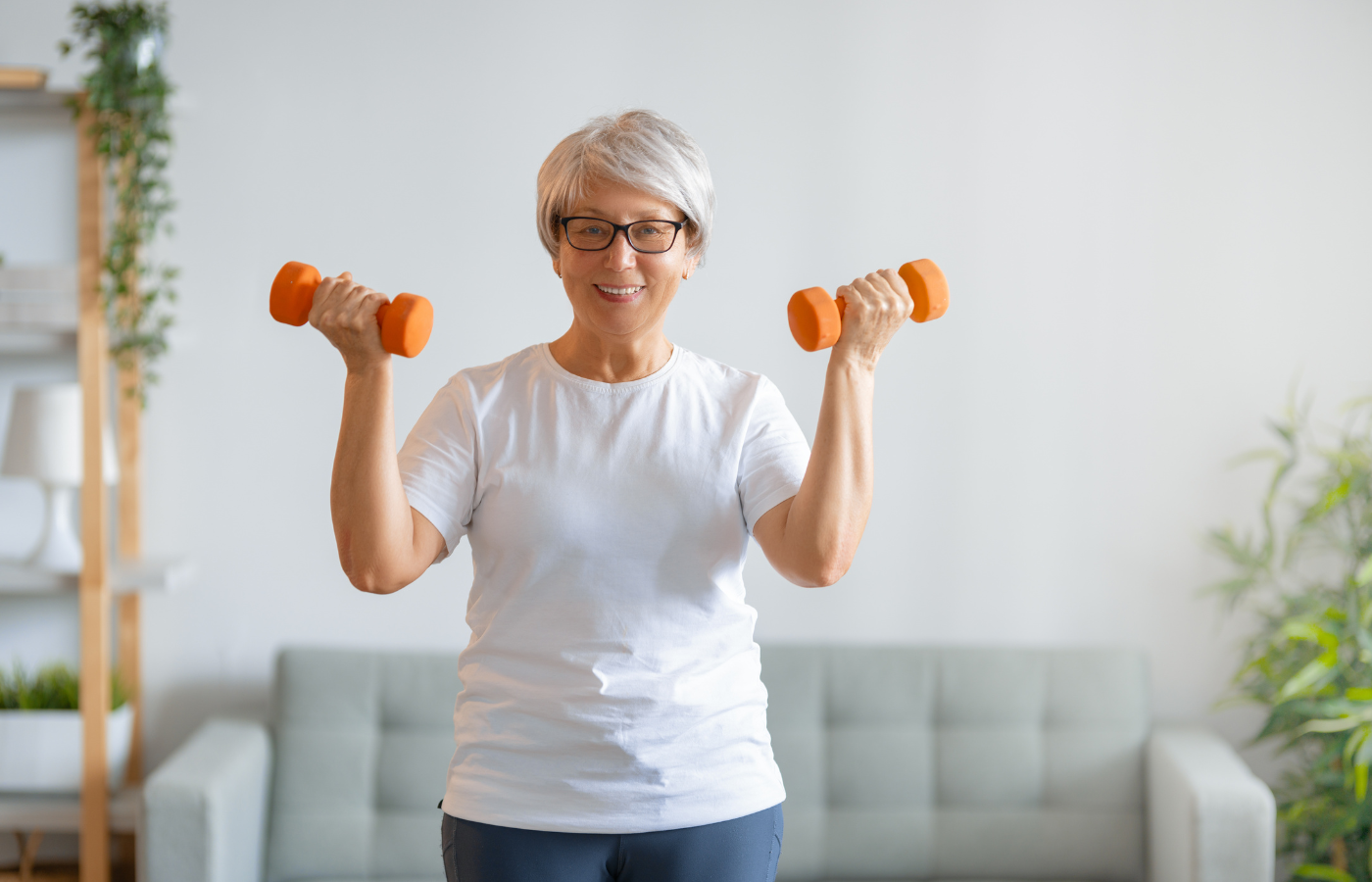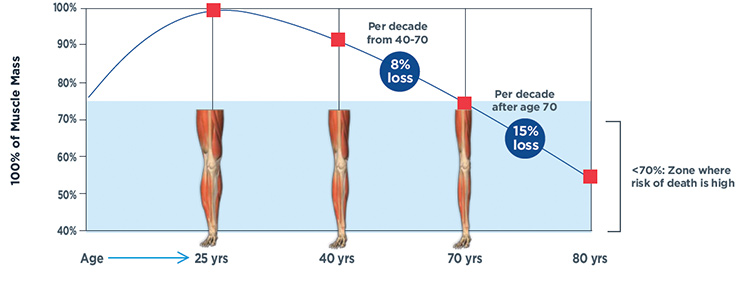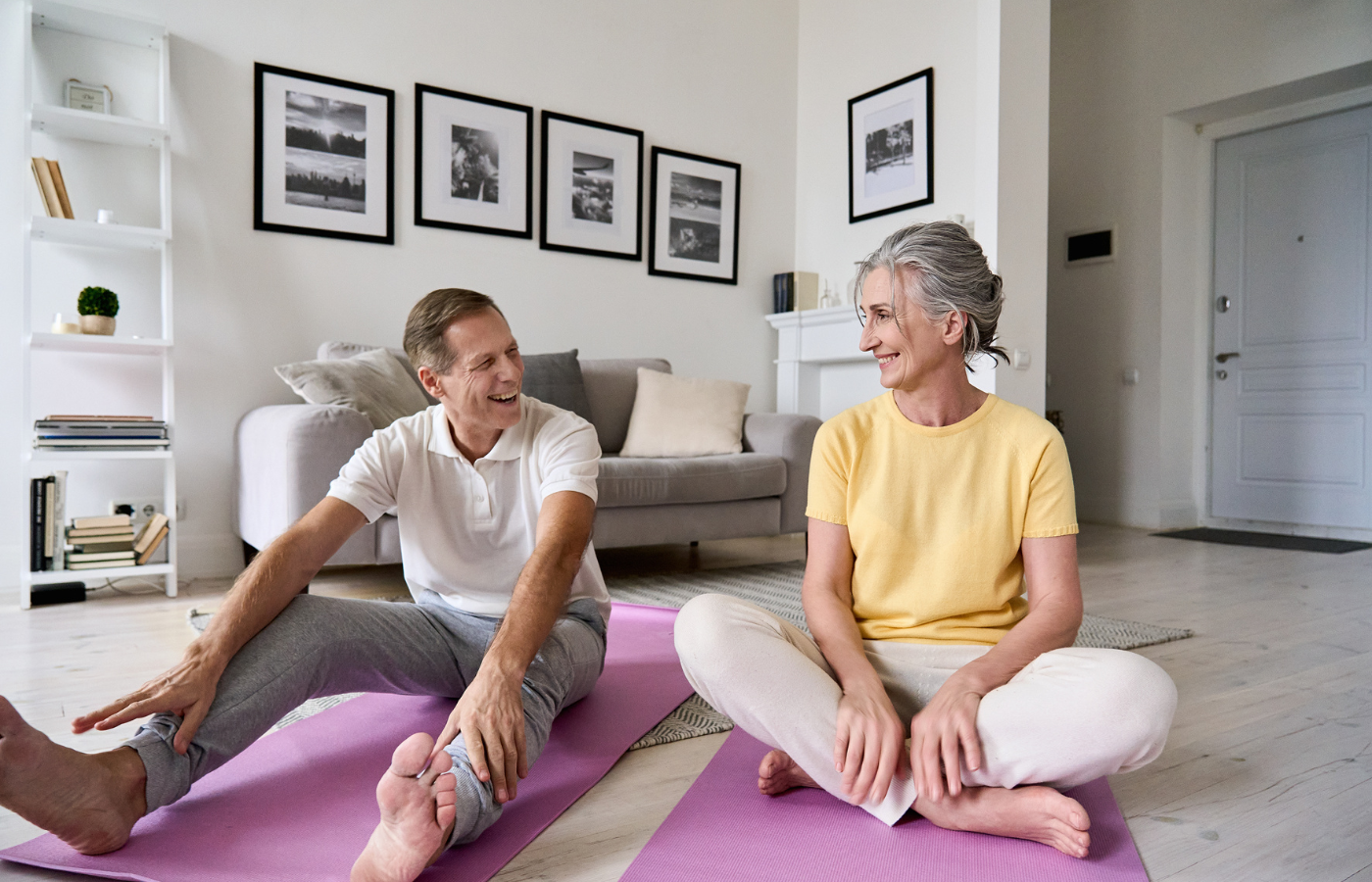Weight Training for Seniors — Example Workout, Benefits & More

As the cycle of life progresses, we find that our physical abilities naturally decline. One such decline is in our muscle mass, which affects our strength, flexibility, and stamina.
This becomes a pain point for many seniors, especially when they can't keep up with their energetic grandchildren.
Enter strength training.
Its importance increases manifold as we age, and it serves as a potential bridge to maintaining — or even enhancing — our physical capabilities.
Importance of Strength Training As We Age
In the YouTube clip below, Daniel Lieberman, a Professor of Human Evolutionary Biology at Harvard University, sheds light on a critical issue faced by elderly people in the Western world: a decline in physical activity as they age:
This decline isn't just a lifestyle choice; it's a consequence of an issue called 'sarcopenia', which means flesh loss. This condition makes basic tasks challenging and triggers a chain reaction: reduced activity leads to reduced fitness, and the cycle continues.
According to Lieberman, hunter-gatherers remained physically active and maintained their strength as they aged because their lifestyle demanded it. In contrast, modern societies have created environments where physical activity isn't a necessity.
This scenario is unfortunate since physical activity, especially strength training, is crucial in preserving healthspan — the period of life spent in good health, free from the chronic diseases and disabilities of ageing.
Related: Why Healthspan is the new Lifespan
Here's the science behind sarcopenia: after the age of 30, we start losing muscle mass and function. This muscle loss is even more pronounced if we remain inactive, leading to a 3% to 5% decrease every decade after the age of 30. The decline accelerates around the age of 75 but can start as early as 65 or even as late as 80.

Image source: https://www.theorganiccompoundingpharmacy.com
While inactivity is a significant contributor, other factors such as a decrease in nerve cells, reduced hormone concentrations and diminished protein-to-energy conversion play roles.
The Grandparent-Grandchild Bond

For grandparents, this muscle loss means less time playing, running, or even simply walking with their grandchildren. The joy of spending quality moments, the laughter, the shared stories, the unspoken bonds — can be compromised.
However, strength training can alter this narrative. By regularly engaging in it, seniors can regain muscle mass, increase their stamina, and, most importantly, enjoy precious moments with their loved ones without the constant worry of physical strain.
Other Risks of Losing Muscle Mass
Muscle mass isn't just about strength or aesthetics; it's an integral part of our overall health and mobility. With age, the decline in muscle can have serious repercussions, some of which are not immediately obvious but profoundly impact an individual's quality of life.
At the core of the risks associated with losing muscle mass is a simple principle: less muscle equates to more weakness, leading to reduced mobility. This cascading effect then translates to a higher susceptibility to falls, and here's where the situation becomes especially concerning. When a senior falls, it's not just a minor tumble the younger generation might shrug off; it can be life-altering.
15-Minute Workout for Seniors

Staying active is essential at any age, and for seniors, it's crucial for maintaining strength, flexibility, and overall health. With this in mind, we present a tailored 15-minute workout specifically designed for seniors, incorporating a blend of gentle exercises and resistance training.
Utilising relatively inexpensive fitness equipment, this routine is effective and easy to follow, ensuring safety, comfort, and efficiency in your workout.
What equipment you’ll need:
Let's get started.
1. Warm-Up (3 minutes): Begin with a light warm-up. Start with some gentle neck, shoulder, and ankle rotations, followed by arm circles.
2. Dumbbell Side Raises (3 minutes): Using the dumbbells, stand straight, holding a dumbbell in each hand by your side. Slowly raise your arms to the side until they're at shoulder height. Lower them back down gently. Aim for 10-12 reps.
3. Resistance Band Leg Press (4 minutes): Sit on the yoga mat with your legs stretched out. Loop a resistance band around your feet and hold the ends with your hands. Bend your knees slightly, then push your legs outwards, stretching the band. Bring them back slowly. Aim for 10-12 reps.
4. Ankle & Wrist Lifts (3 minutes): Wear the ankle/wrist weights. Raise your wrists when sitting, and lift your legs one by one while standing. Aim for 10-12 reps for both the ankles and wrists.
5. Cool down (2 minutes): Wind down with some gentle stretching of the arms, legs, and back to relax the muscles.
This routine is a basic yet effective way to kickstart your strength training journey.
Remember, the key is consistency and progression. Over time, as strength builds, one can increase the repetitions or include more exercises.
For more information on the right exercise equipment for seniors, see Best Exercise Equipment for Over 55s.
Invest in Your Health Today
Strength training is more than just a fitness regime for seniors. It's a step towards prolonged independence, towards being actively involved in family moments, and towards healthspan enhancement.
The evidence is undeniable — as we age, physical activity becomes more crucial, not less. Investing in our health today can reap rewards in the form of cherished memories with loved ones tomorrow.
For expert advice on more workouts and fitness equipment for seniors, reach out to the Orbit Fitness team on 1300 13 42 13, email or live chat in your own time, today.











